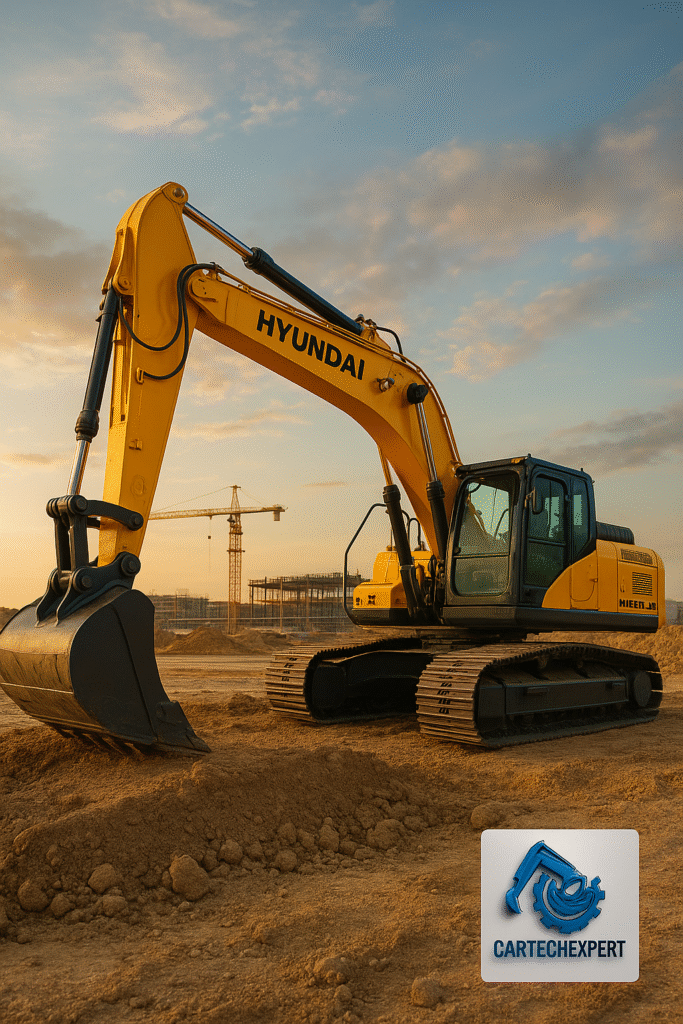Physical Address
Arthur Avenue , BrookField , ILLINOIS , 60513 , United State

If you’ve ever stood beside a Hyundai excavator or wheel loader, you’ve probably felt the same sense of reliability that defines the brand. But what many don’t realize is that Hyundai’s dominance in construction machinery didn’t start on the ground — it began at sea. This journey from shipyards to earthmovers tells a powerful story of resilience, precision engineering, and relentless pursuit of innovation. Today, you’ll explore how Hyundai Heavy Industries (HHI) transformed from a national shipbuilder into a global heavy equipment powerhouse — shaping modern construction in ways you may never have imagined.
Hyundai Heavy Industries was founded in 1972 in Ulsan, South Korea, initially as a shipbuilding company. Under the leadership of Chung Ju-Yung, the brand’s focus was clear — build a modern Korea through innovation, industrialization, and strong engineering foundations. Within a few years, Hyundai became one of the world’s largest shipbuilders. But Hyundai’s ambitions didn’t stop there.
By the early 1980s, Hyundai recognized a growing need for domestic construction and infrastructure machinery in Korea. With large-scale projects booming across Asia, the company pivoted towards the heavy equipment sector — marking the birth of Hyundai Construction Equipment (HCE). This division would soon redefine performance standards in excavators, wheel loaders, and forklifts.
When Hyundai introduced its first line of excavators, the market was dominated by established names like Caterpillar, Komatsu, and Liebherr. Hyundai faced an uphill climb — but the company’s approach combined affordability with durability, quickly attracting global attention.
By maintaining a balance between affordability and innovation, Hyundai created machinery that appealed to both emerging markets and established construction giants.
Hyundai’s philosophy has always been centered around continuous improvement. Each generation of machinery introduced smarter systems, more efficient engines, and enhanced operator comfort. Key technological milestones include:
Hyundai collaborated with major engine suppliers like Cummins and Perkins to produce Tier-4 and Stage-V compliant machines, ensuring both environmental responsibility and fuel efficiency.
From the ergonomic cabs with vibration reduction to air-suspension seats and wide-visibility monitors, Hyundai prioritized the comfort of operators who spend long hours on site.
Hyundai’s Hi-Mate system allows real-time tracking, remote diagnostics, and performance monitoring — a feature that puts Hyundai in direct competition with other telematics systems like CAT’s Product Link and Komatsu’s KOMTRAX.
Modern heavy equipment isn’t just about brute power — it’s about smart integration. Hyundai’s diagnostic ecosystem connects machines, technicians, and project managers in real-time. Here’s how it compares across different aspects:
| Feature | Hyundai Hi-Mate | CAT Product Link | Komatsu KOMTRAX |
|---|---|---|---|
| Remote Diagnostics | ✔ Full integration with Hyundai Smart Fleet | ✔ Integrated service reports | ✔ Remote error code monitoring |
| Data Frequency | Real-time updates (cloud-based) | Every 15 minutes | Hourly intervals |
| Mobile Access | iOS & Android supported | Limited mobile interface | Web portal only |
This real-time intelligence empowers technicians to identify issues before they become failures — reducing downtime, increasing safety, and saving your business operational costs.
When you compare Hyundai with the giants of the industry, several factors stand out:
Overall, Hyundai’s position as a global contender continues to strengthen, supported by consistent updates in design, engineering precision, and eco-friendly performance.
Hyundai’s success lies not just in manufacturing but in understanding global customer needs. With factories in Korea, China, India, and Brazil, Hyundai has strategically positioned itself near major construction hubs. The company’s aftersales service network and parts availability have significantly improved user trust worldwide.
Hyundai continues to invest heavily in R&D — focusing on automation, electric machinery, and smart jobsite integration. This ensures that their machines stay relevant in the rapidly evolving landscape of construction technology.
Hyundai’s future vision revolves around robotics, electric drives, and autonomous equipment. By combining AI-driven analytics and IoT sensors, Hyundai plans to make equipment that predicts wear, adjusts hydraulics automatically, and optimizes productivity based on terrain and load. This vision reflects the same dedication that transformed the company from a shipbuilder into an industrial leader.
From its humble beginnings in a shipyard to a commanding presence in global construction sites, Hyundai Heavy Industries has built more than machines — it has built trust, performance, and progress. As you continue exploring heavy equipment evolution, take a moment to read related history articles on Caterpillar, Komatsu, Liebherr, and John Deere.
Each story connects to the broader mission of CARTECHEXPERT — to help you master diagnostics, repair smarter, and stay ahead in the heavy equipment industry.
Hyundai’s combination of affordability, durability, and advanced telematics (Hi-Mate) sets it apart from competitors.
Hyundai collaborates with global suppliers like Cummins, Perkins, and Scania to optimize engine performance and emission standards.
Visit store.cartechexpert.com to explore diagnostic cables, software, and tools compatible with Hyundai and other brands.
Hyundai offers comparable performance with lower ownership costs, making it ideal for growing fleets and budget-conscious operators.
Explore the CARTECHEXPERT Blog for detailed brand histories and diagnostic tutorials.
